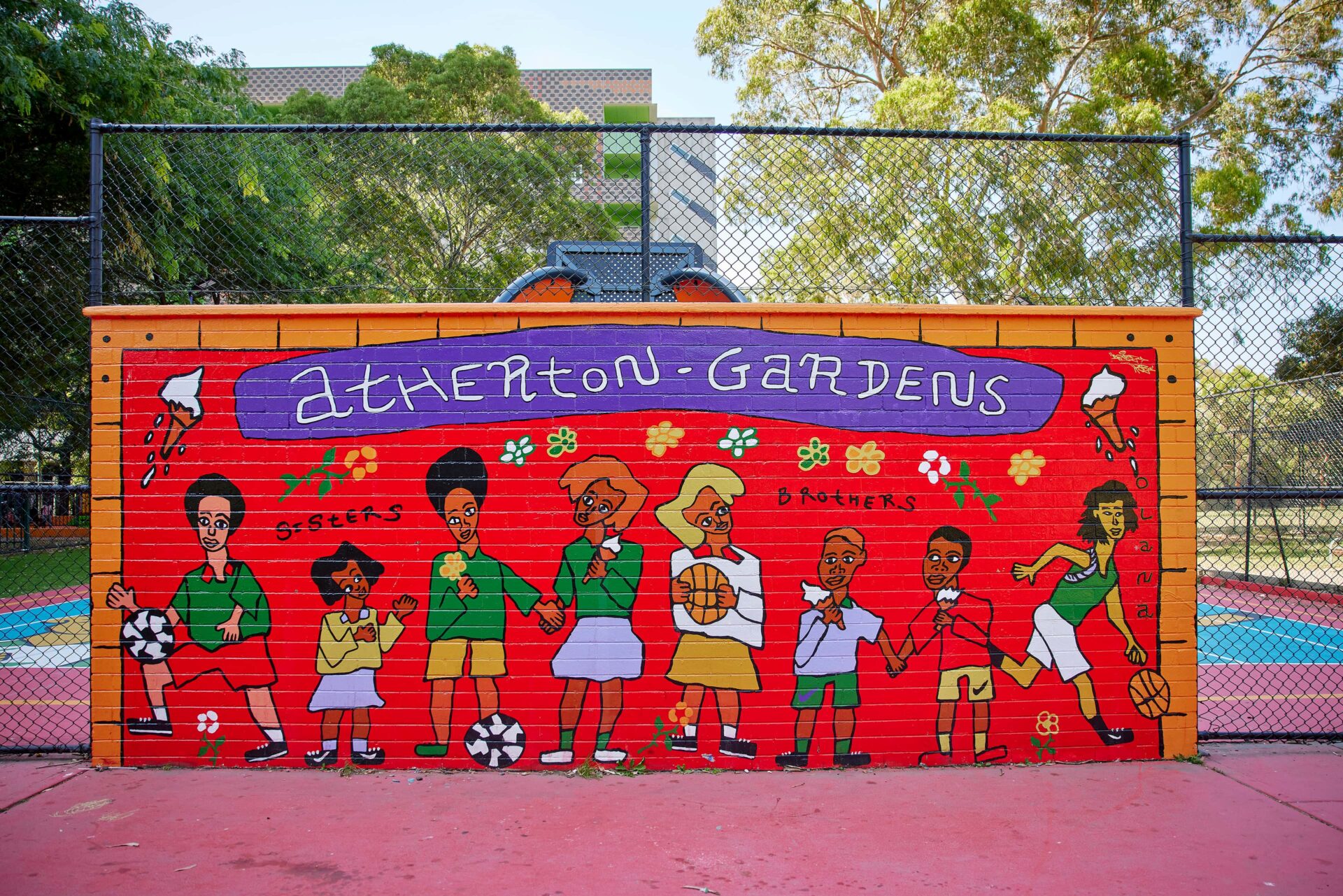Written by Birchmore Photography by Mitch Fong
Neighbourhood development across Australia is undergoing a retraction away from sprawling and disconnected suburbs to more compact, walkable communities that are reminiscent of traditional villages.
Looking at a modern masterplan, there are increasing similarities from smaller block sizes and tree lined streets, to integrated retail and pocket parks that assist with every-day activities and orientation. There is, however, one clear and irreversible difference. Where traditionally the geographic and social centre of a village was the church, it is now the playground.
Remembering the pandemic, few places were as important to us as playgrounds. Their closure in Victoria was heartfelt, but the joy of watching children playing and neighbours connecting was real and invigorating. For weeks and months these became the social centres of neighbourhoods, the place where people came to catch-up with friends, enjoy the sunshine, have a picnic, and feel part of a community. As our communities have become increasingly multicultural and, in many places, non-denominational, the playground serves the most essential function of bringing people together and creating a shared spirit and sense of belonging.
You can discover more about a person in an hour of play than a year of conversation.
To this point, playgrounds are not about kids but communities; and while we may think about play as being something for children, it is well established that play needs to be for everyone. Play is fundamental to social wellbeing – it releases stress and increases brain functionality and creativity. Plato, some two-and-half thousand years ago, observed that “you can discover more about a person in an hour of play than a year of conversation.”
There are few guidelines on how to design inter-generational play spaces, but recent research from the Queensland University of Technology found that teachable moments in park design facilitated inter-generational play. Views of wildlife were credited in helping generations to explore and discover together, while sculptures and information panels made playgrounds more interesting for older visitors. Creating places with different energy levels was seen as essential for inter-generational play, as was the provision of shade, seating, and unstructured spaces where you could BYO equipment or use your imagination.
Around the world, nature-based play has been a growing thematic in playground design. Making places feel at one with nature and creating landscapes that invite discovery have been demonstrated to entice both kids as well as adults. Embedding sustainability principles into the design of nature play would be an opportunity to increase teachable moments, and we believe there is enormous opportunity to explore Indigenous design and storytelling in creating a new generation of play spaces in Australia.
As we plan for the next neighbourhood, the next community, the next village, let’s also consider what it means to create the next playground.















